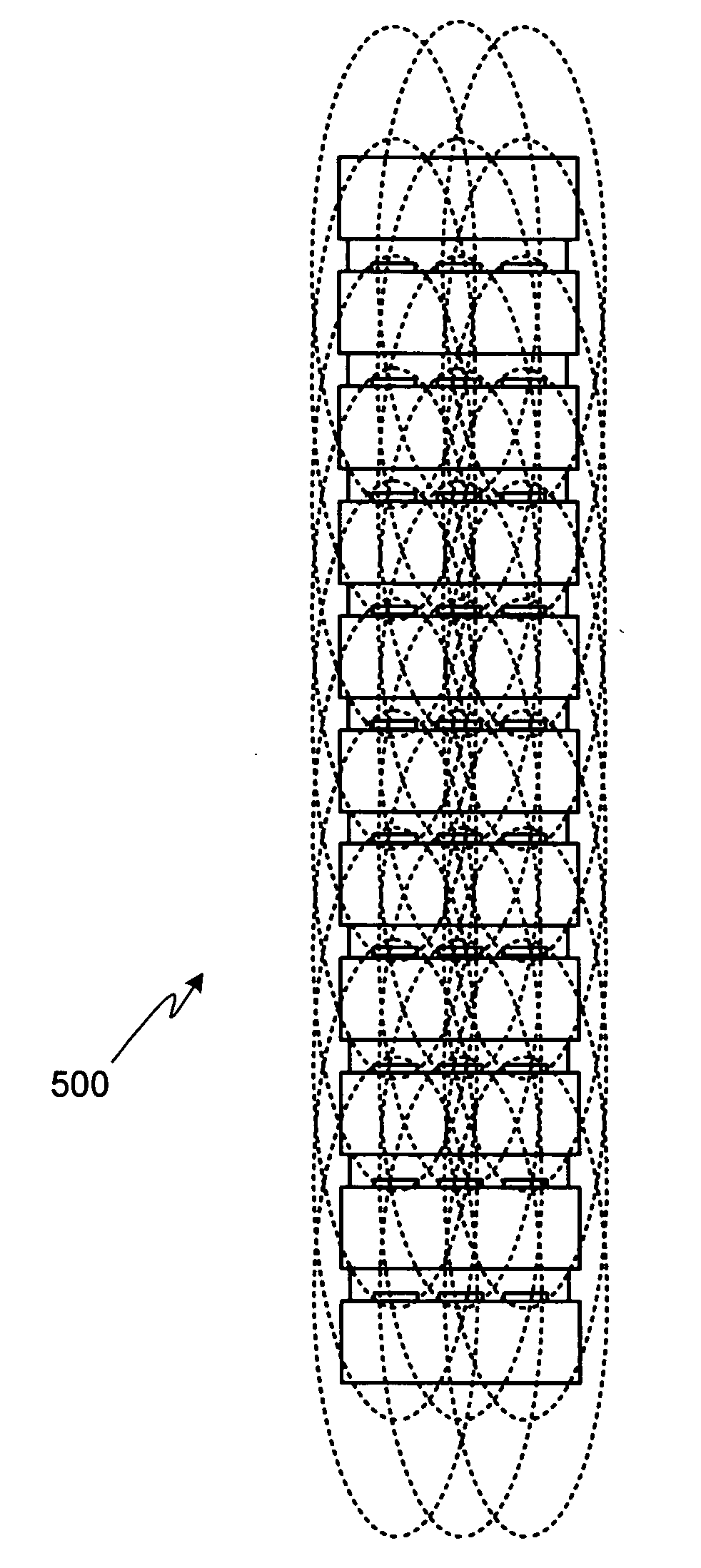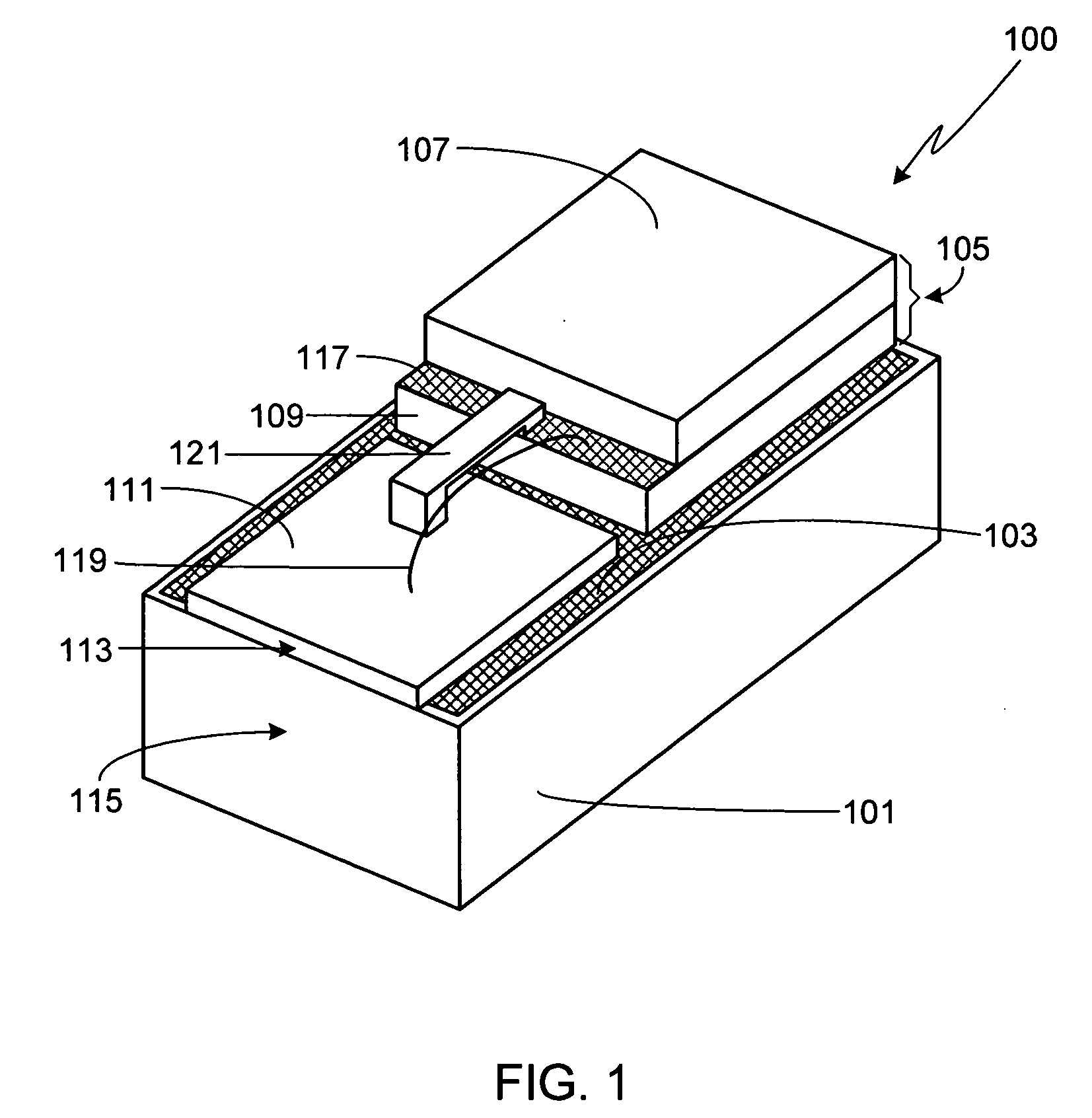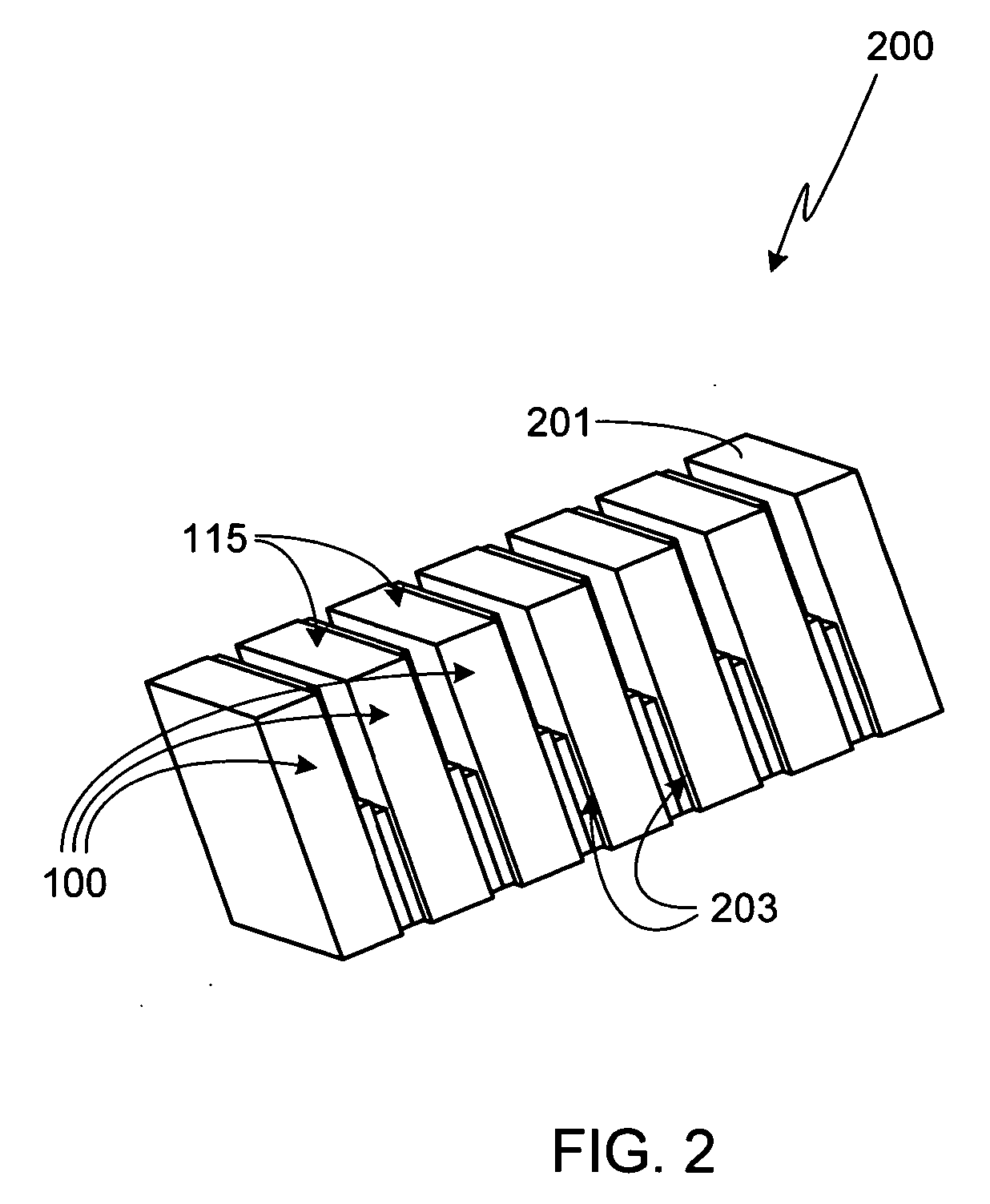Laser diode package utilizing a laser diode stack
a laser diode and stack technology, applied in the field of semiconductor lasers, can solve the problems of premature degradation, sudden failure, and significant wavelength shift, and achieve the effect of good thermal coupling
- Summary
- Abstract
- Description
- Claims
- Application Information
AI Technical Summary
Benefits of technology
Problems solved by technology
Method used
Image
Examples
Embodiment Construction
[0019] The present invention provides a vertical or horizontal stack of laser diode submount assemblies, each submount assembly including at least one laser diode. In a preferred embodiment, each laser diode of each submount assembly operates at the same wavelength. In an alternate embodiment, the laser diode or diodes of each submount assembly operate at a different wavelength. In yet another alternate embodiment, the stack includes groups of laser diodes where each group operates at a preset wavelength (e.g., 635 nm, 808 nm, 975 nm, 1470 nm, 1900 nm, etc.). It will be appreciated that there are a variety of possible configurations depending upon the number of desired wavelengths and the number of submount assemblies within the laser diode package.
[0020]FIG. 1 is an illustration of a single laser diode submount assembly 100. To achieve the desired levels of performance and reliability, preferably submount 101 is comprised of a material with a high thermal conductivity and a CTE th...
PUM
 Login to View More
Login to View More Abstract
Description
Claims
Application Information
 Login to View More
Login to View More - R&D
- Intellectual Property
- Life Sciences
- Materials
- Tech Scout
- Unparalleled Data Quality
- Higher Quality Content
- 60% Fewer Hallucinations
Browse by: Latest US Patents, China's latest patents, Technical Efficacy Thesaurus, Application Domain, Technology Topic, Popular Technical Reports.
© 2025 PatSnap. All rights reserved.Legal|Privacy policy|Modern Slavery Act Transparency Statement|Sitemap|About US| Contact US: help@patsnap.com



